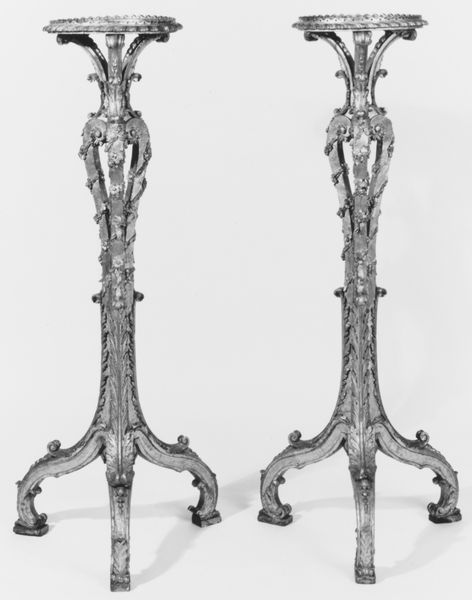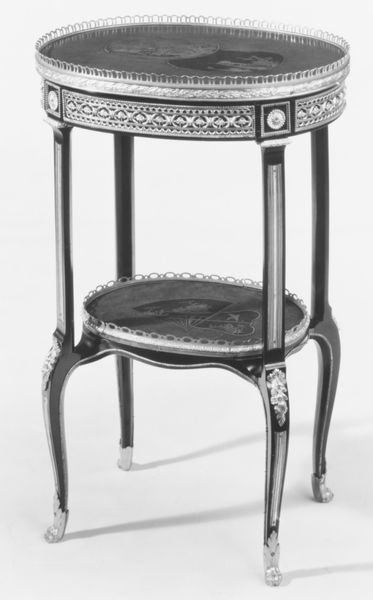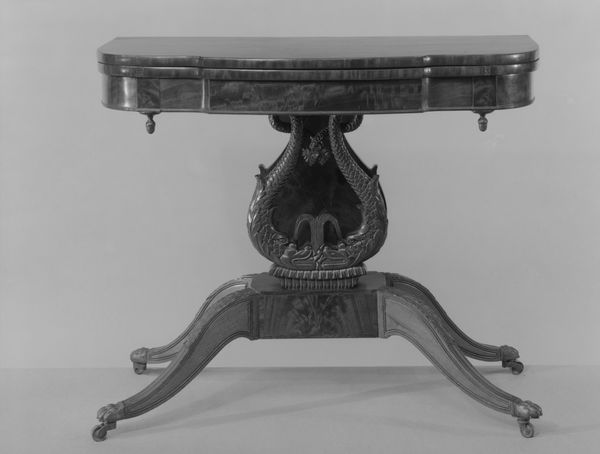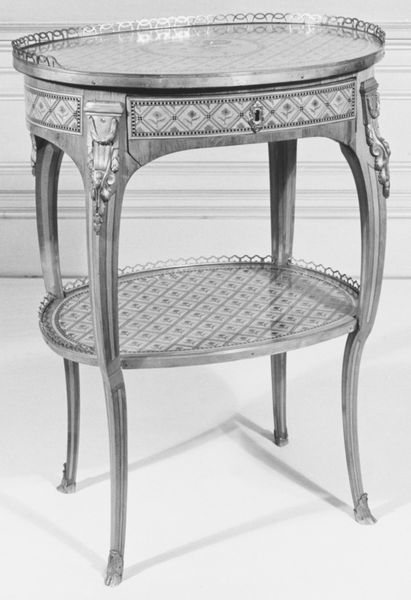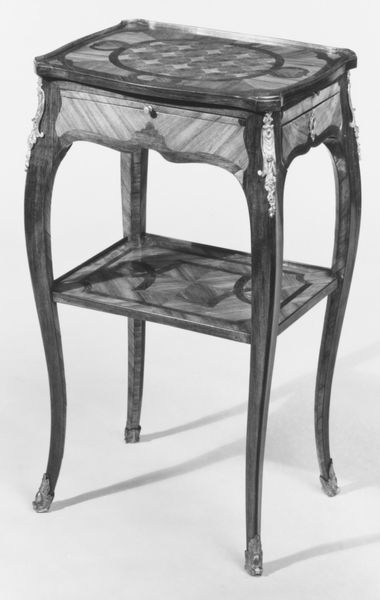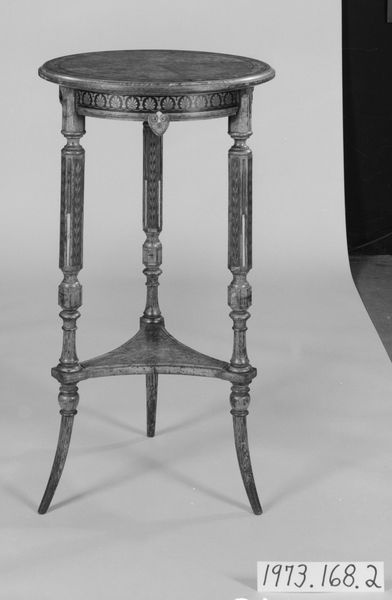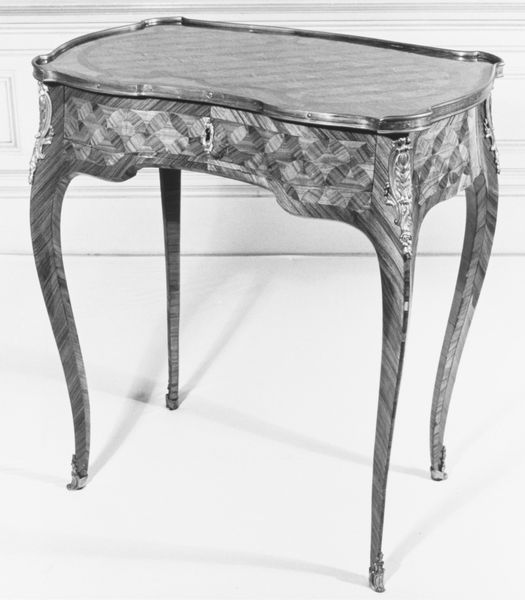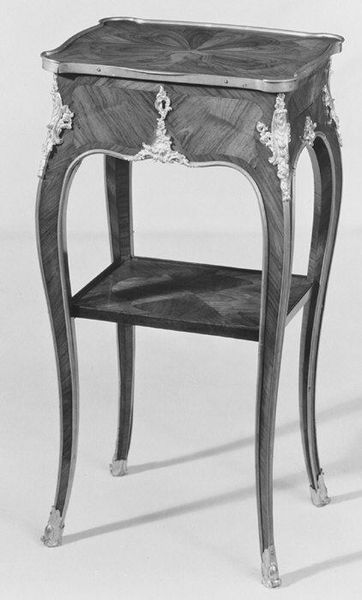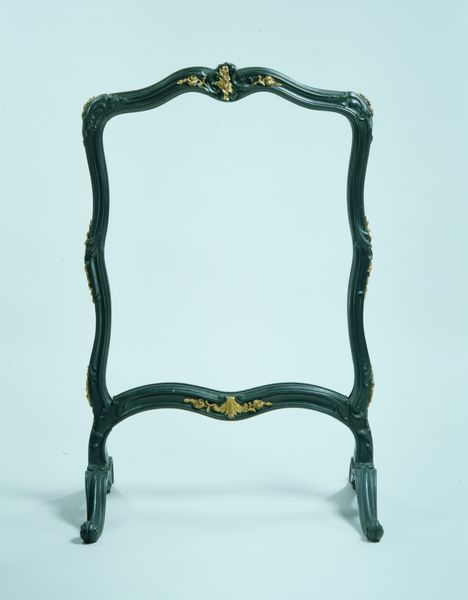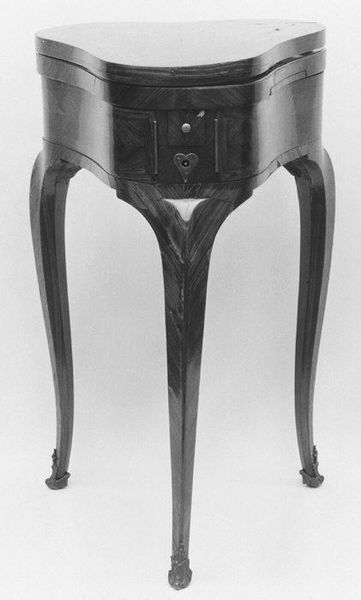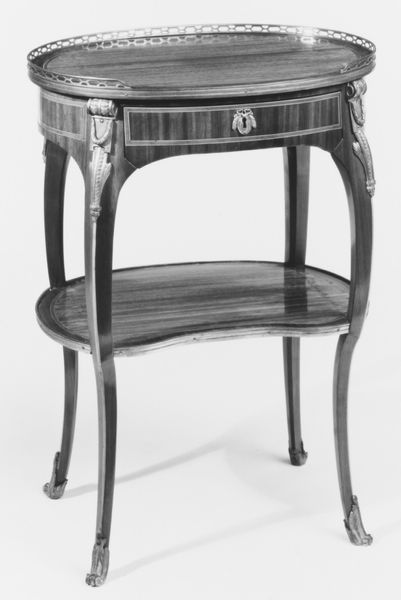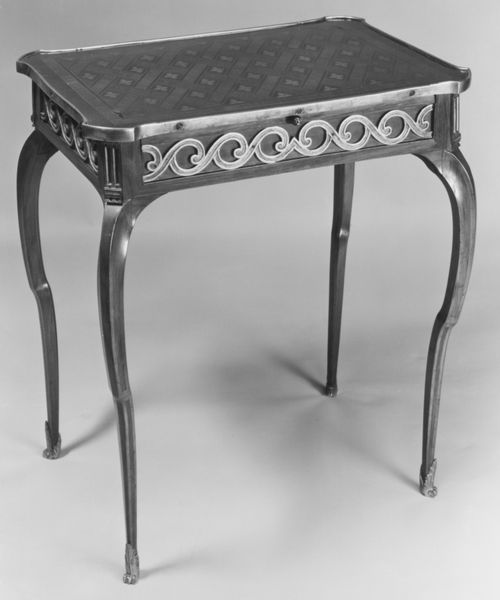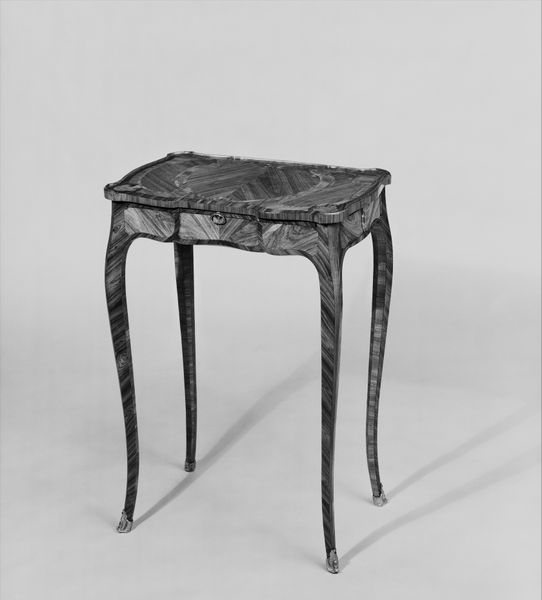
sculpture, wood
#
sculpture
#
furniture
#
sculpture
#
wood
#
decorative-art
#
rococo
Dimensions: 27 1/8 × 17 1/4 × 11 3/4 in. (68.9 × 43.8 × 29.8 cm)
Copyright: Public Domain
Editor: Here we have Bernard II van Risenburgh’s "Work and Writing Table," crafted sometime between 1750 and 1765. The use of wood is quite striking, particularly given how it's shaped. What strikes me most is its elegance, yet simplicity. How do you see this piece, particularly thinking about its making? Curator: Well, focusing on materiality, we see how this Rococo piece isn't simply about visual pleasure, but also reflects the highly specialized labor practices of 18th-century Parisian ebenistes, or cabinet makers. Consider the veneers: painstakingly applied to create elaborate patterns. How do those refined embellishments, which probably involved different specialists, fit into this context of labor and the making process? Editor: I hadn't considered the labor element so deeply. I guess, I was viewing it from an aesthetic perspective. The question is, does understanding the work behind this make me think about the craftsmanship differently? Curator: Exactly. The metalwork, too, is essential. Who was producing all this, under what conditions, and for whom? Were these individual artisans celebrated or simply part of a workshop? Were they part of the burgeoning industrial methods of production that changed labor relations? Editor: I see. It encourages a deeper look. Were these craftsmen considered artists themselves? Or tradesmen just following orders? That intricate detail... someone really cared. Curator: That’s the tension, isn't it? Rococo straddles the line. Mass production makes these lavish forms accessible, but what is lost in that transformation? It brings the item closer to something for everyone instead of just something exclusive. Editor: So, by exploring the means of production, the social context becomes more relevant to interpreting the artistic value. The artistry isn't just in the design, but in the whole socio-economic picture. Curator: Precisely. And we start questioning what "art" even means in this environment of shifting material culture. This forces us to broaden our appreciation of what "art" entails. Editor: Absolutely! I will definitely remember that social aspect the next time I encounter rococo furniture.
Comments
No comments
Be the first to comment and join the conversation on the ultimate creative platform.
